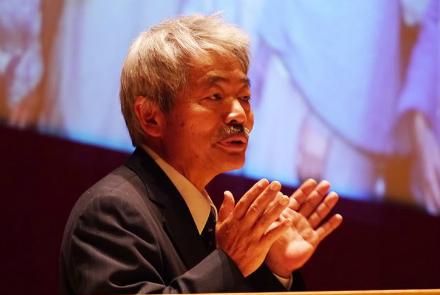The government of Japan said Monday it will bestow a decoration on Dr. Tetsu Nakamura, the Japanese aid worker who was killed in a shooting earlier this month in the eastern province of Nangarhar, Afghanistan.
His death left many Afghans in shock as he spent 30 years of his life in Afghanistan, leaving behind many welfare projects accomplished.
The 73-year-old physician will be awarded the Order of the Rising Sun, Gold Rays with Rosette, Chief Cabinet Secretary Yoshihide Suga said in a news conference, quoted by Japan’s mainichi.jp.
The report says that Japanese Prime Minister Shinzo Abe will also give a letter of gratitude to honor “Dr. Nakamura's years of significant achievement for the development of Afghanistan” in a ceremony to be held on Friday, the top government spokesman said.
Gold Rays with Rosette ranks as the fourth highest of six decorations in the Rising Sun order, awarded for achievements in international relations and other fields.
Nakamura's remains were repatriated to Japan on December 7 following a state funeral attended by Afghanistan’s President Ashraf Ghani, who said Nakamura was a “hero.”
Nakamura, 73, came to Afghanistan in the 1980s to treat leprosy. But he changed many more lives with the canal-building techniques he brought from Japan.
He established canals diverting water from the Kunar River and also dug over 1500 wells that now provide clean water to over 650,000 people in Nangarhar.
The Japanese aid worker helped to build a main canal about 25.5 km long from the Kunar River to the Gamberi area.
Before his death, he was working on the second phase of this canal with a budget of more than $15 million.
After facing difficulties in procuring equipment to dig the first canals, he drew inspiration from techniques used more than 200 years ago in his hometown in Japan.
Along with irrigation projects, Nakamura established two hospitals, as well as two mosques.

